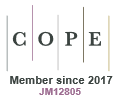RD25062Molecular dynamics simulations of cytochrome P450 aromatases reveal structural variances across the cat family
This study explores the structural and functional dynamics of aromatase (CYP19A1) across cat species, including extinct and extant members. Using homology modelling and molecular dynamics simulations, we reveal key sequence differences affecting dimerisation stability and haem cofactor interactions. Compared to human aromatase, feline variants exhibit weaker dimer interfaces, particularly in solution, while membrane embedding enhances stability. These findings suggest evolutionary adaptations influencing enzymatic function and substrate processing, providing insights into steroid biosynthesis across species. Image by the authors.
RD25062 Abstract | RD25062 Full Text | RD25062PDF (4.3 MB) | RD25062Supplementary Material (3.3 MB) Open Access Article




















